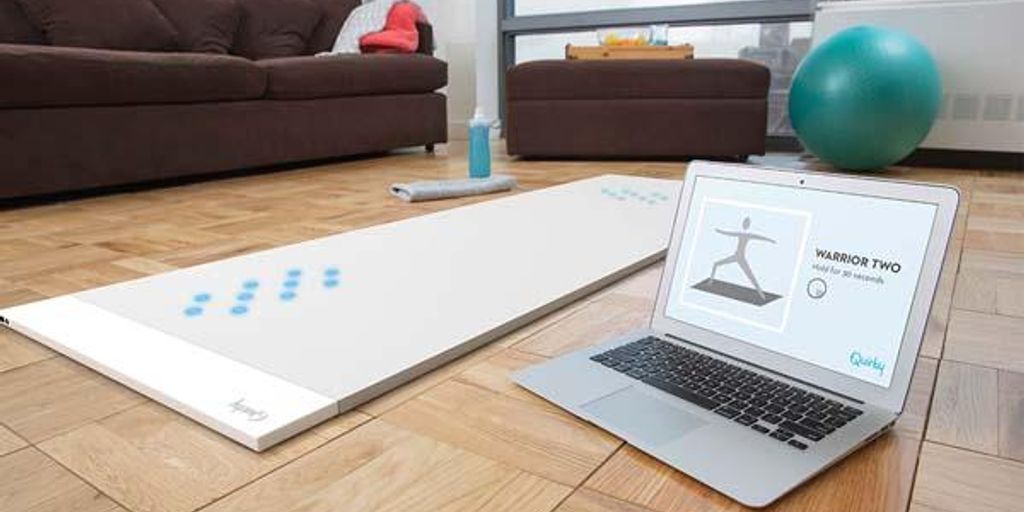
Choosing the Right Yoga Mat: How Thick Should It Be?
Choosing the right yoga mat is essential for ensuring a comfortable and effective practice. One of the key factors to consider is the thickness of the mat, as it can significantly impact your overall experience. This article will guide you through the various aspects of yoga mat thickness, including its benefits and drawbacks, and help you determine the best option for your specific needs.
Key Takeaways
- Yoga mat thickness is crucial for comfort and support during practice.
- Thicker mats provide enhanced comfort and joint protection but may pose portability and balance challenges.
- Your choice of mat thickness should align with the type of yoga you practice and your personal comfort preferences.
- Different materials interact with thickness to affect the mat's durability and eco-friendliness.
- Proper care, including cleaning and storage, is essential for maintaining the quality of your thick yoga mat.
Understanding Yoga Mat Thickness
Standard Thickness Options
Yoga mats come in various thicknesses, typically ranging from 1/16 inch to 1/4 inch. The most common options are:
- 1/16 inch (1.5mm): Ultra-thin mats, ideal for travel.
- 1/8 inch (3mm): Standard mats, offering a balance of comfort and portability.
- 1/4 inch (6mm): Thicker mats, providing extra cushioning.
Why Thickness Matters
The thickness of your yoga mat can significantly impact your practice. Thicker mats offer more cushioning, which can be beneficial for joint protection and comfort. However, they may also affect your balance and stability during certain poses.
Comparing Thin vs Thick Mats
When comparing thin and thick mats, consider the following:
- Thin Mats: Better for balance and stability, easier to transport.
- Thick Mats: Provide more cushioning and support, but can be bulkier.
Choosing the right thickness is a balance between cushioning and support based on your weight and yoga style.
For a comprehensive guide for men on choosing the right size and thickness of a yoga mat, consider body size for optimal movement and comfort.
Benefits of a Thicker Yoga Mat
Enhanced Comfort
A thicker yoga mat provides enhanced comfort during your practice. With thicker cushioning, you're sure to have comfort—perfect for HIIT, restorative practices, savasana time, meditation or anyone seeking a little extra TLC for their joints and muscles.
Joint Protection
Thicker mats offer superior joint protection, which is crucial for those with sensitive knees, wrists, or other joints. The additional padding helps to absorb impact and reduce strain, making it easier to perform poses without discomfort.
Better Support for Various Poses
A thicker mat can provide better support for various poses, especially those that require you to be on your knees or elbows for extended periods. This added support can help you maintain proper alignment and reduce the risk of injury.
Investing in a thicker yoga mat can significantly enhance your practice by providing the comfort and support needed for a wide range of activities.
Drawbacks of a Thicker Yoga Mat
Portability Issues
One of the main drawbacks of a thicker yoga mat is its portability. Thicker mats tend to be heavier and bulkier, making them less convenient to carry around, especially if you travel frequently for your yoga practice. This can be a significant consideration when choosing the right thickness for your yoga mat.
Balance Challenges
Thicker mats can also pose balance challenges. While they offer more cushioning, they can make it harder to maintain stability in certain poses. This is particularly true for standing and balancing poses, where a firmer, thinner mat might provide better support.
Storage Concerns
Storing a thicker yoga mat can be more cumbersome. These mats take up more space and may not fit as easily into standard yoga mat bags or storage solutions. This is another factor to consider when evaluating the material, durability, grip, and portability of your yoga mat.
When choosing the right thickness for your yoga mat, it's crucial to balance comfort and stability. Consider material, durability, grip, and portability to find the best option for your practice.
Choosing the Right Thickness for Your Practice
Types of Yoga and Thickness Needs
Different types of yoga require different mat thicknesses. For instance, a thicker mat is ideal for restorative yoga, which involves holding poses for longer periods. Conversely, a thinner mat is better suited for more dynamic practices like Vinyasa or Ashtanga yoga, where stability and balance are crucial.
Personal Comfort and Preferences
The ideal thickness for a yoga mat depends on your practice style and personal preference. Generally, mats range from 1/16 inch to 1/4 inch thick. Thicker mats offer more cushioning, which can be beneficial for those with sensitive joints or those who prefer a softer surface.
Environmental Considerations
When choosing a yoga mat, it's essential to consider the environment where you'll be practicing. For outdoor sessions, a thicker mat can provide better insulation and comfort on uneven surfaces. However, for indoor practices, a thinner mat might be more convenient and easier to store.
Remember, the ideal thickness for a yoga mat depends on your practice style and personal preference. Take the time to try out different options to find what works best for you.
Material and Thickness: How They Interact
Common Yoga Mat Materials
Yoga mats come in a variety of materials, each offering unique benefits and drawbacks. Common materials include PVC, TPE, natural rubber, and cork. PVC mats are durable and provide excellent support but are not eco-friendly. TPE mats are more environmentally friendly and offer good cushioning. Natural rubber mats are sustainable and provide great grip, while cork mats are both eco-friendly and naturally antimicrobial.
Material Durability and Thickness
The durability of a yoga mat is closely linked to its material and thickness. Thicker mats made from high-quality materials like natural rubber or TPE tend to last longer. However, even thinner mats can be durable if made from robust materials. When choosing the right thickness, consider how often you practice and the intensity of your sessions.
Eco-Friendly Options
For those concerned about the environment, eco-friendly yoga mats are a great choice. Materials like natural rubber, cork, and organic cotton are sustainable and biodegradable. These mats not only offer the necessary support and comfort but also align with eco-conscious values.
When selecting a yoga mat, the importance of thickness for comfort, stability, and support cannot be overstated. Consider body weight, yoga style, and environment when selecting thickness.
Caring for Your Thick Yoga Mat
Cleaning Tips
To maintain the longevity of your thick yoga mat, regular cleaning is essential. The best way to keep a yoga mat clean longer is to lay a towel over it when practicing. Try this to help your mat stay clean between cleanings. To do this, lay the towel flat on the mat before starting your session. Avoid using harsh chemicals; instead, opt for a mixture of water and mild soap. Wipe down the mat after each use and let it air dry completely before rolling it up.
Storage Solutions
Proper storage can significantly extend the life of your yoga mat. Always store your mat in a cool, dry place away from direct sunlight. Rolling your mat loosely rather than tightly can prevent creases and cracks. If space is an issue, consider using a yoga mat bag or strap for easy storage and portability.
Maintaining Durability
To ensure your thick yoga mat remains durable, avoid wearing shoes on the mat and keep it away from sharp objects. Regularly inspect your mat for signs of wear and tear, and replace it if you notice any significant damage. Investing in a high-quality mat can also make a big difference in its longevity.
A well-maintained yoga mat not only enhances your practice but also ensures better hygiene and comfort.
Caring for your thick yoga mat is essential to ensure its longevity and performance. Regular cleaning and proper storage can make a significant difference. For more tips and to explore our range of high-quality yoga mats, visit our website today!
Conclusion
Choosing the right yoga mat thickness is essential for enhancing your practice and ensuring comfort and safety. Whether you prefer a thin mat for better stability and connection to the ground, a medium-thickness mat for a balance of comfort and support, or a thick mat for extra cushioning, it's important to consider your personal needs and the type of yoga you practice. By understanding the benefits and drawbacks of different mat thicknesses, you can make an informed decision that will support your yoga journey. Remember, the best mat for you is one that aligns with your practice style and provides the comfort and support you need to thrive.
Frequently Asked Questions
What is the ideal thickness for a beginner's yoga mat?
For beginners, a yoga mat with a thickness of around 6mm (1/4 inch) is generally recommended. It provides a good balance of comfort and stability.
Are thicker yoga mats better for joint protection?
Yes, thicker yoga mats offer better cushioning, which can help protect your joints during poses, especially in practices that involve a lot of floor work.
How does mat thickness affect balance?
Thicker mats can sometimes make balancing poses more challenging because they create a softer, less stable surface. This is something to consider if balance is a key part of your practice.
Can I travel with a thick yoga mat?
Traveling with a thick yoga mat can be cumbersome due to its bulk and weight. If you travel frequently, you might want to consider a thinner, more portable option.
What materials are best for thick yoga mats?
Materials like PVC, TPE, and natural rubber are commonly used for thick yoga mats. Each material has its own benefits in terms of durability, grip, and eco-friendliness.
How do I clean and store a thick yoga mat?
To clean a thick yoga mat, use a mild detergent and water solution, and wipe it down with a soft cloth. For storage, keep it rolled up in a cool, dry place away from direct sunlight to maintain its durability.


